Sarah Chaabo Instagrams her way through India to breakdown commonly held stereotypes about the country by showcasing its beauty…
“Where are you travelling to next, Sarah?”
“India!”
”Really? Man, who goes to India? Isn’t it really poor and stuff?”
That was the typical reaction I received from friends when telling them that I intended to visit India. Why do Arabs feel so apprehensive about the country?
I don’t want to simply reduce it to the ‘Arab superiority complex’, or the classic reincarnation of the ‘Old Aunty’ form of casual racism that reduces India to the ‘dirty’ country that exports domestic helpers. Sometimes it is as simple as receiving a shrug and an ‘Oh…’ in response.
As an extensive traveller whose adventures are usually met with excitement and romanticisation by friends, meeting these reactions really got me thinking about the extent to which our cultural biases are subtly ingrained. And don’t get me started on the “Be careful not to get raped” comments; doesn’t anyone follow the local news? Rape culture is universal and we are not exempt as Australians – nor as Arabs, for that matter.
I absolutely loved my journey through India. I have never experienced so much diversity nor felt such awe at history, society and humanity like I did in that country. Consequently, I hope that through sharing some of my Instagram posts, you too can witness the incredible place that is India. Be sure to click on the images for a slideshow with captions.
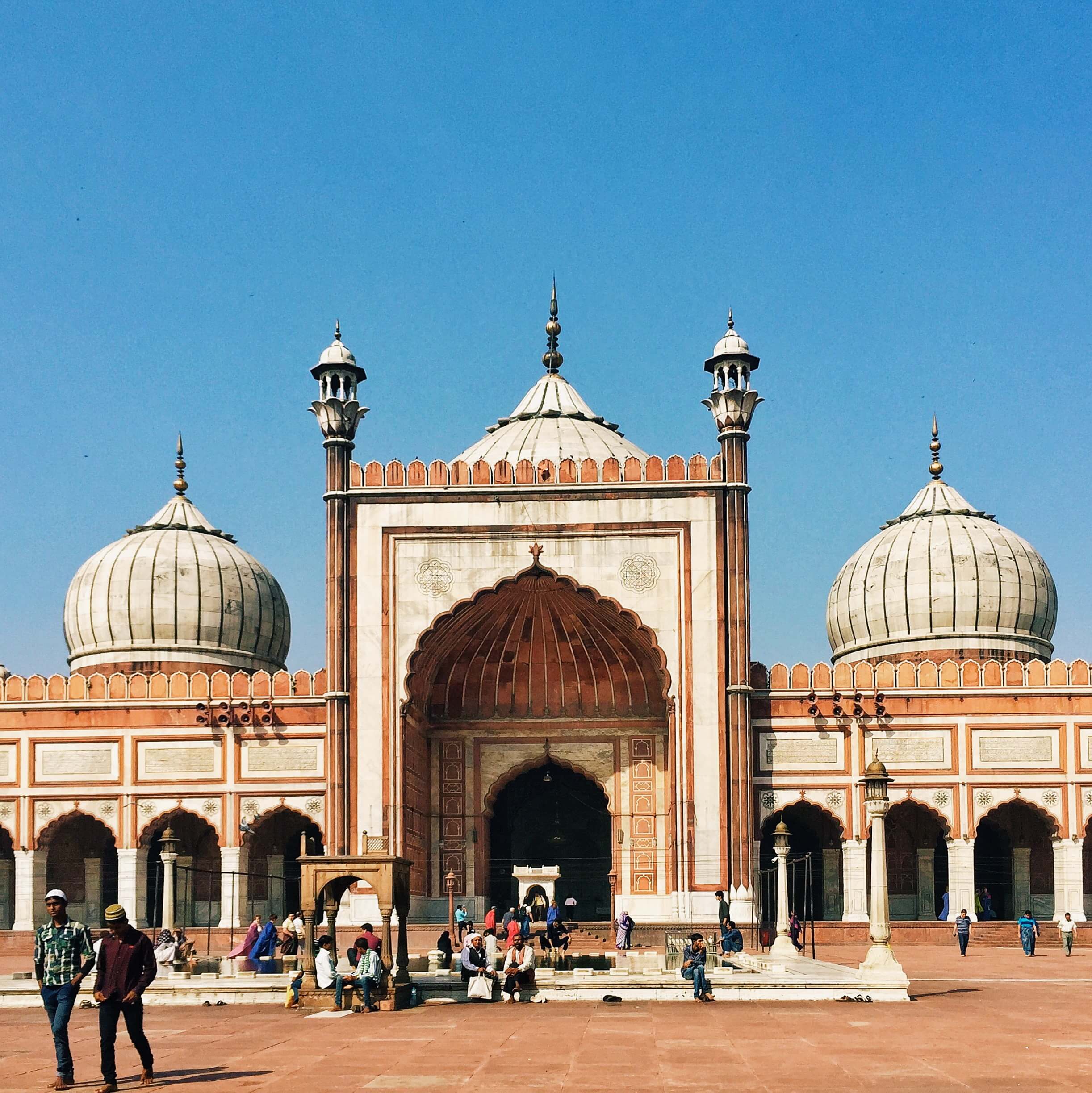
Jami Masjid (old) Delhi – Made of sandstone and marble, and perched on top of a hill overlooking the surrounding neighbourhoods, is the largest mosque in India. Standing in the central courtyard, which – when not used in prayer – is a meeting place for locals and a rest stop for travellers, who sit under the shade of the side arches to have lunch before moving on. I felt this wonderful sense of calm anda connection with my faith that was reminiscent of my time at the Ummayid Mosque in Damascus, the Al Qurawiyuun mosque in Fez and my hometown Grand Mosque in Tripoli.

A rickshaw ride through Chandni Chawk Markets was both exhilarating and terrifying. As you pass through the narrow streets, you notice that there are hundreds of electrical wires strung across all the shop fronts, to which you’re so close that you can touch their sidewalk displays, and you barely bypass the goats and cows who share the same pedestrian thoroughfare. If this experience doesn’t remind you of every Middle Eastern suq (old market) then it means you’ve never been to the Middle East! I think the Lebanese Ministry of Tourism should get onto utilizing rickshaws.

Jaipur is the capital of Rajastan, which is the largest state in India. The city conjures up all the romanticised Bollywood imagery of palaces, forts and opulence that you’d expect from your time in India. It also delivers it… tenfold – from the City Palace and Museum, to the Hawa Mahal (Palace of the Winds, where the women of the harem would look out at the processions below without being seen) then onto the magnificent Amber fort perched on the hillside boating panoramic views of the city below.
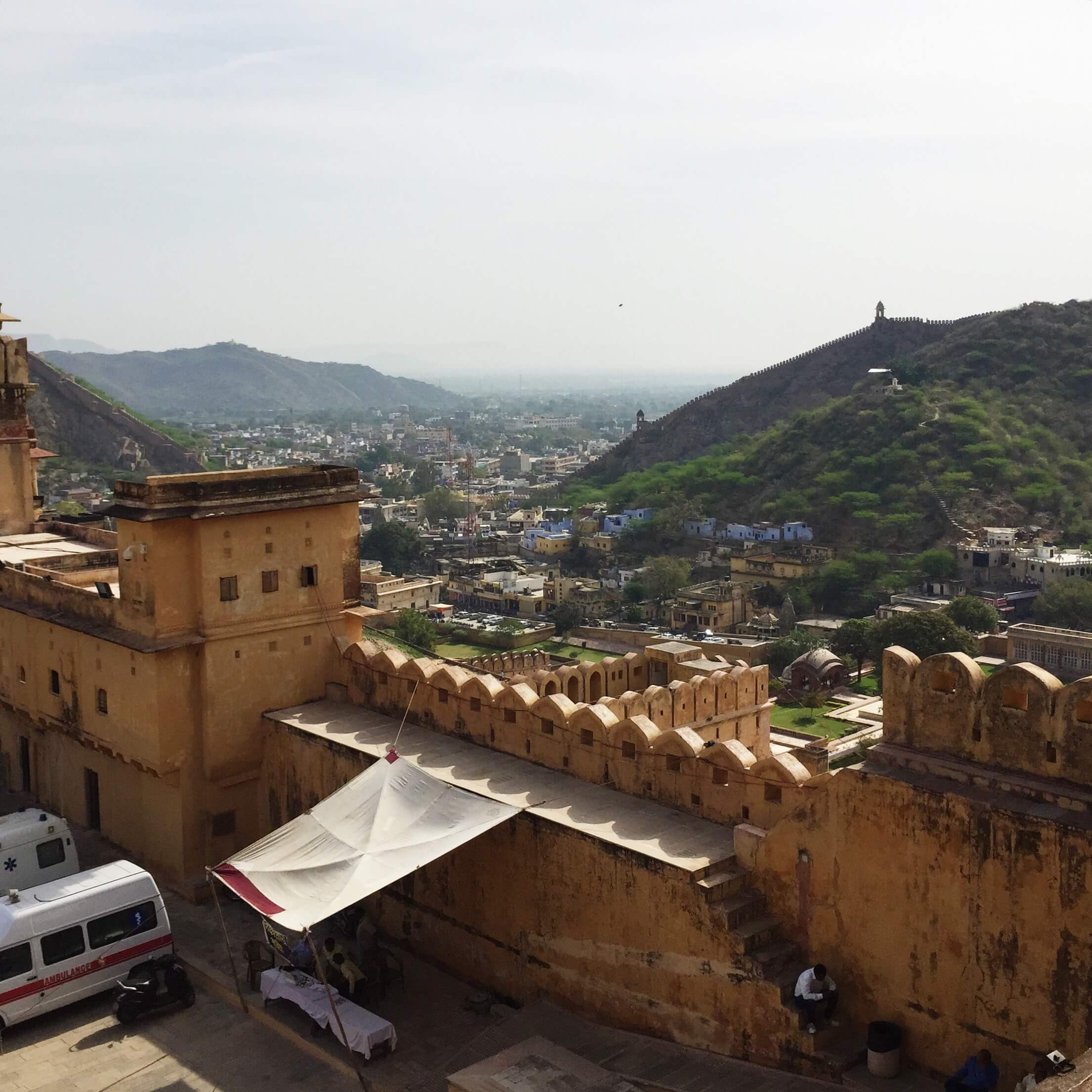
Jaipur, India
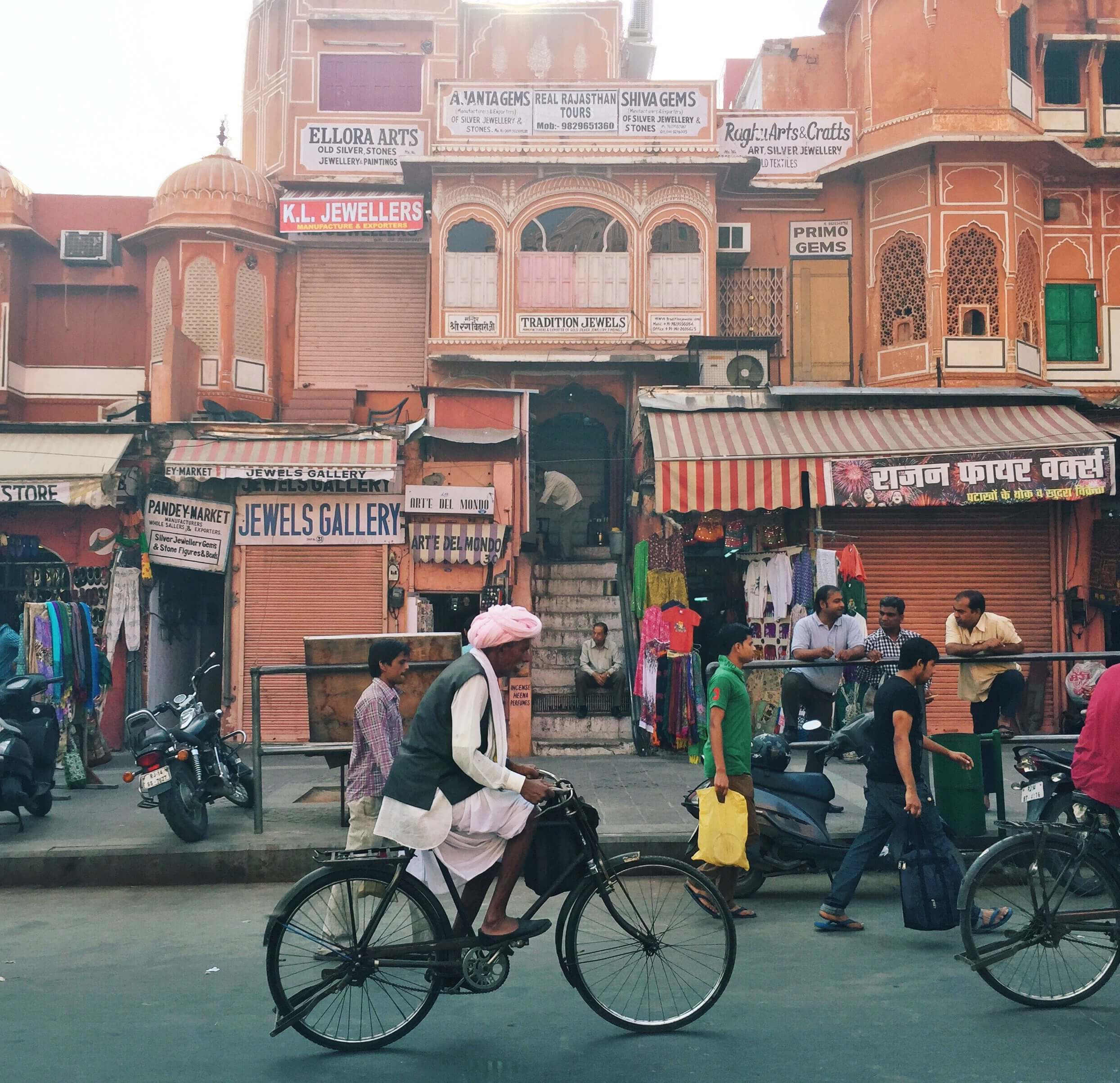
Jaipur, India
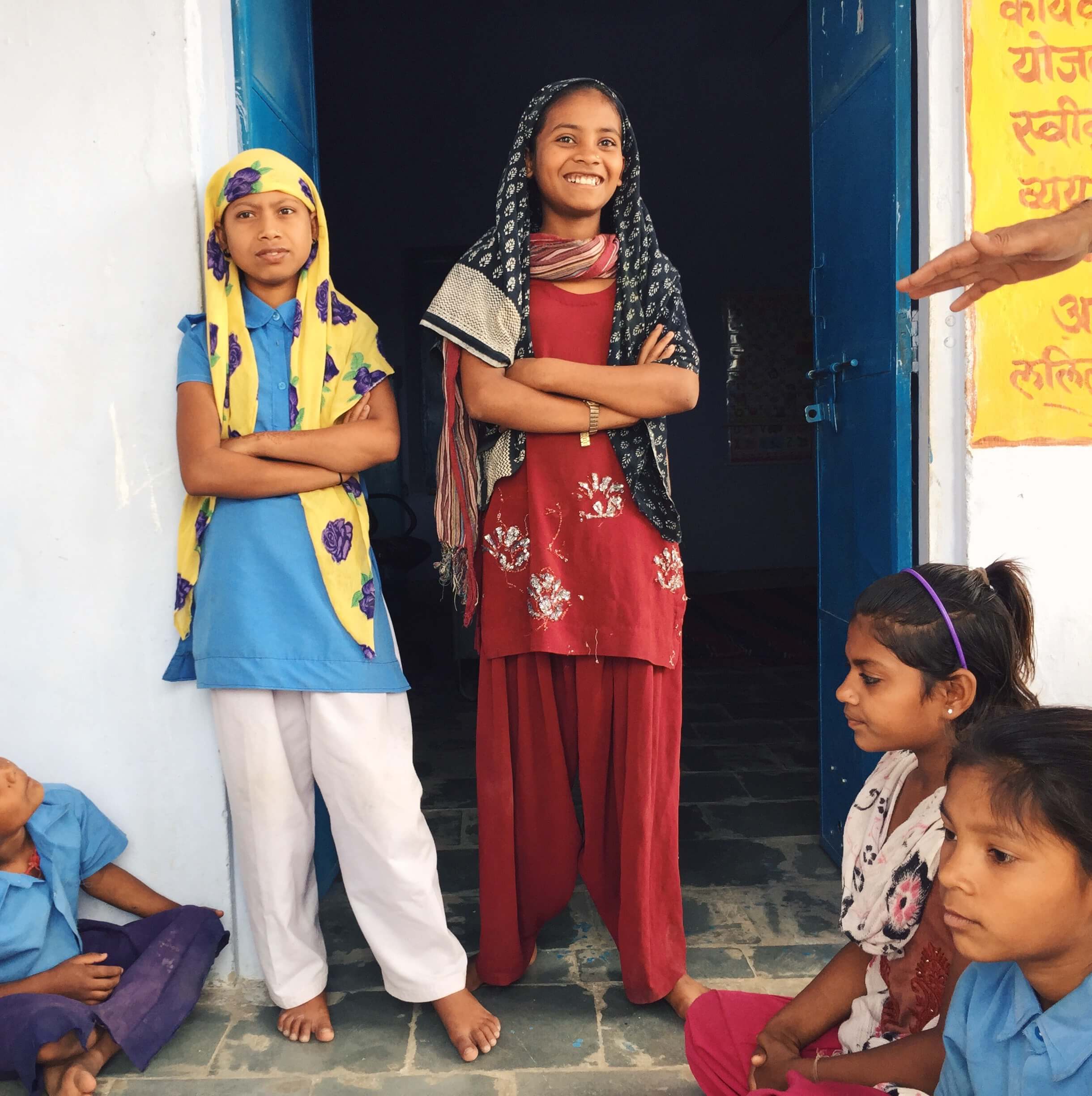
School at Phandarej – I found myself at times lost in the tourist trap of India – nice restaurants, the palace visits and cultural “shows” are great, but the real India, which is fascinating, passes you by when you’re looking out from the bus/rickshaw. Passing high-rises followed by slums then followed by agricultural projects and farmers harvesting without the use of modern equipment …that’s the India I wanted to explore and experience. So, we decided to stop at a school, taking a turn off on the Jaipur – Agra Highway. The government school was in the village of Phandarej, which an impoverished part of the state. The kids were excited to have visitors and sang their school song as well as practiced their English with us. We met the principal, a man, although suffering from Polio, has dedicated his life to teaching the next generation of India. He told us that the government provides free education to all who cannot afford it, and each school provides a cook so all the children get a free meal to encourage the parents to keep them in school.
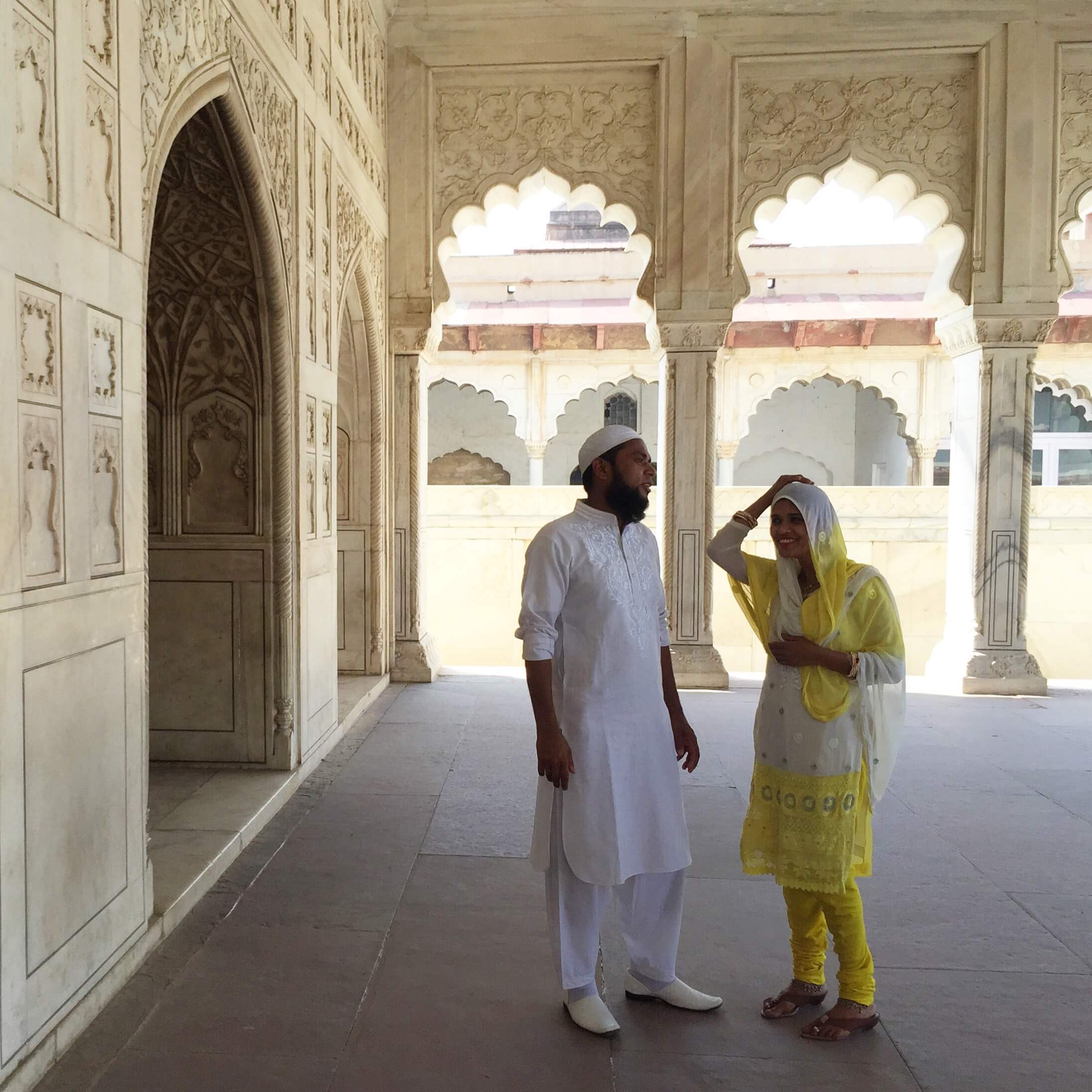
Agra Fort – I photographed this Muslim couple on their honeymoon. People are happy to be photographed in India and more-so love to be photographed with you! It was this reverse orientalism where the fair skinned Westerner was the subject of curiosity and awe, but, heck, you must say “yes!” when a whole bunch of sweet aunties want you in their photo! I had little girls wanting photos with me and asking me to pose like them.
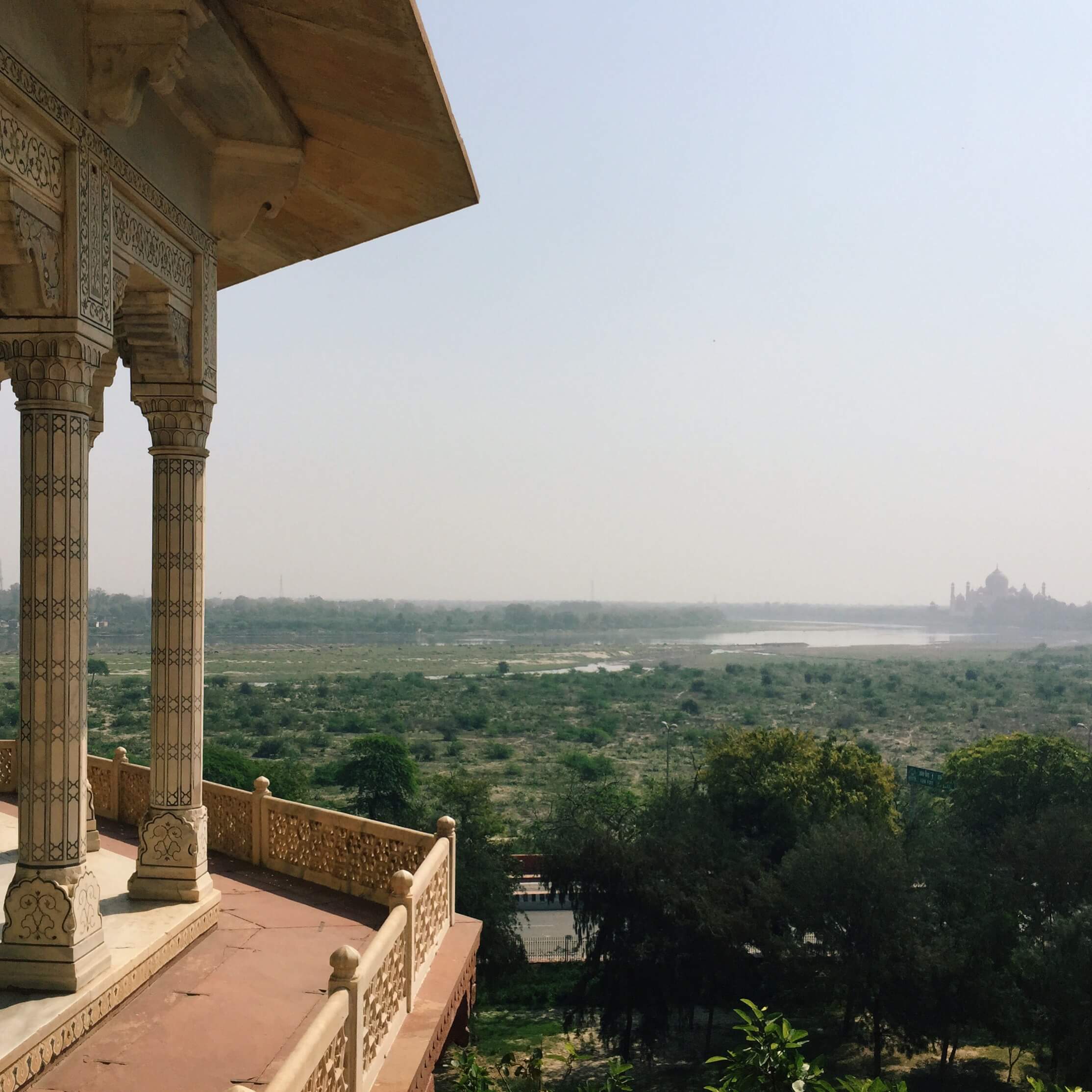
The first time I saw the Taj Mahal was from this balcony in the Agra fort. In this marble tower (Musaman Burj), the emperor Shah Jahan would stare out at the monument he had built for his wife Mumtaaz. The love for his wife was juxtaposed against the jealousy and desire for power of his son, who had Shah Jahan imprisoned here until his death. I remembered all the Arabian love and folklore stories with which I grew up, and I can only imagine the significance of visiting this site for the locals who grew up with the story of the Taj Mahal.
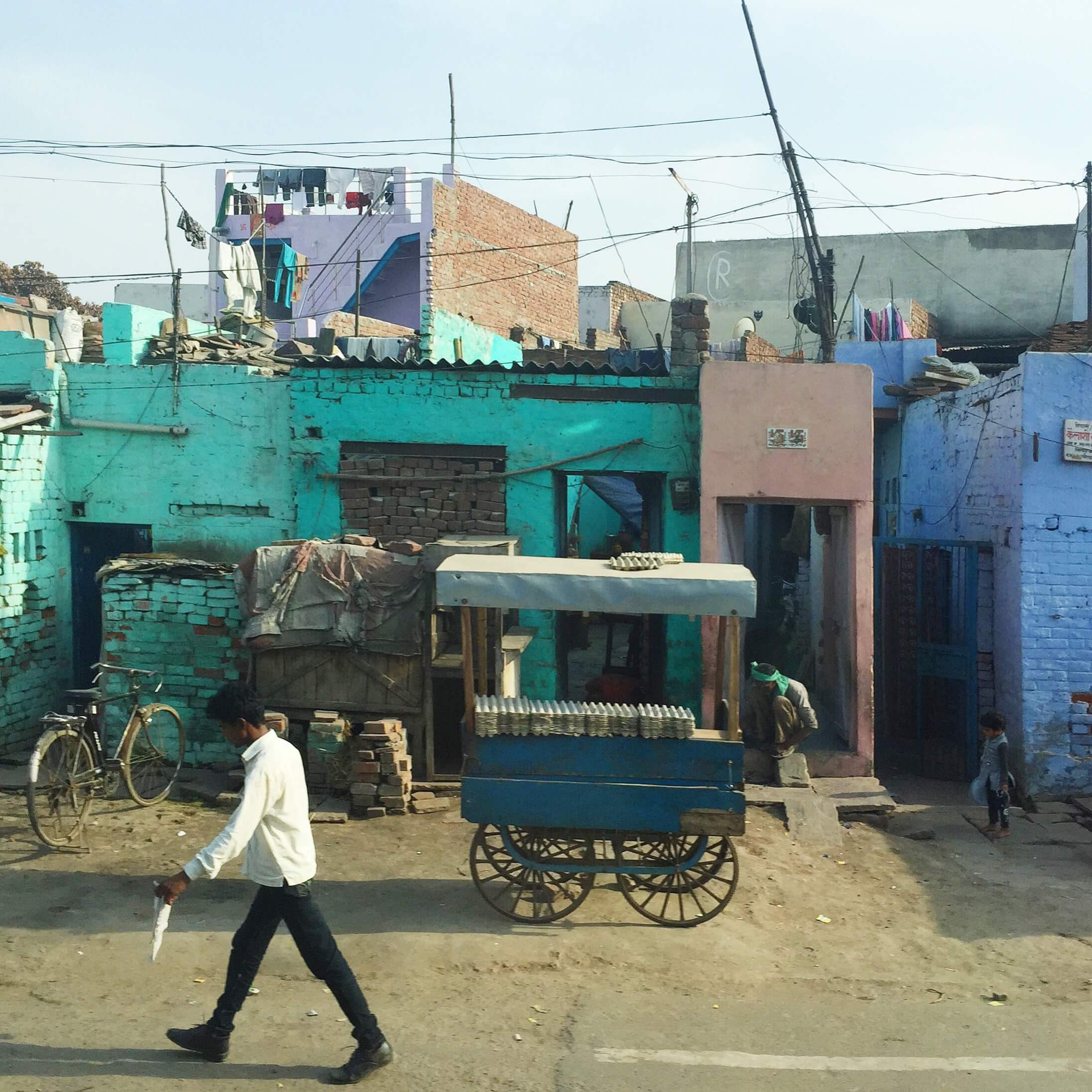
Agra city reminds me so much of the outskirts of Tripoli and the rougher neighbourhoods of South Beirut. It’s not as established as the other cities we visited, which is a real surprise considering that it’s the city of the Taj. I still loved it though, the layers, crowds and street scenes such as this one.
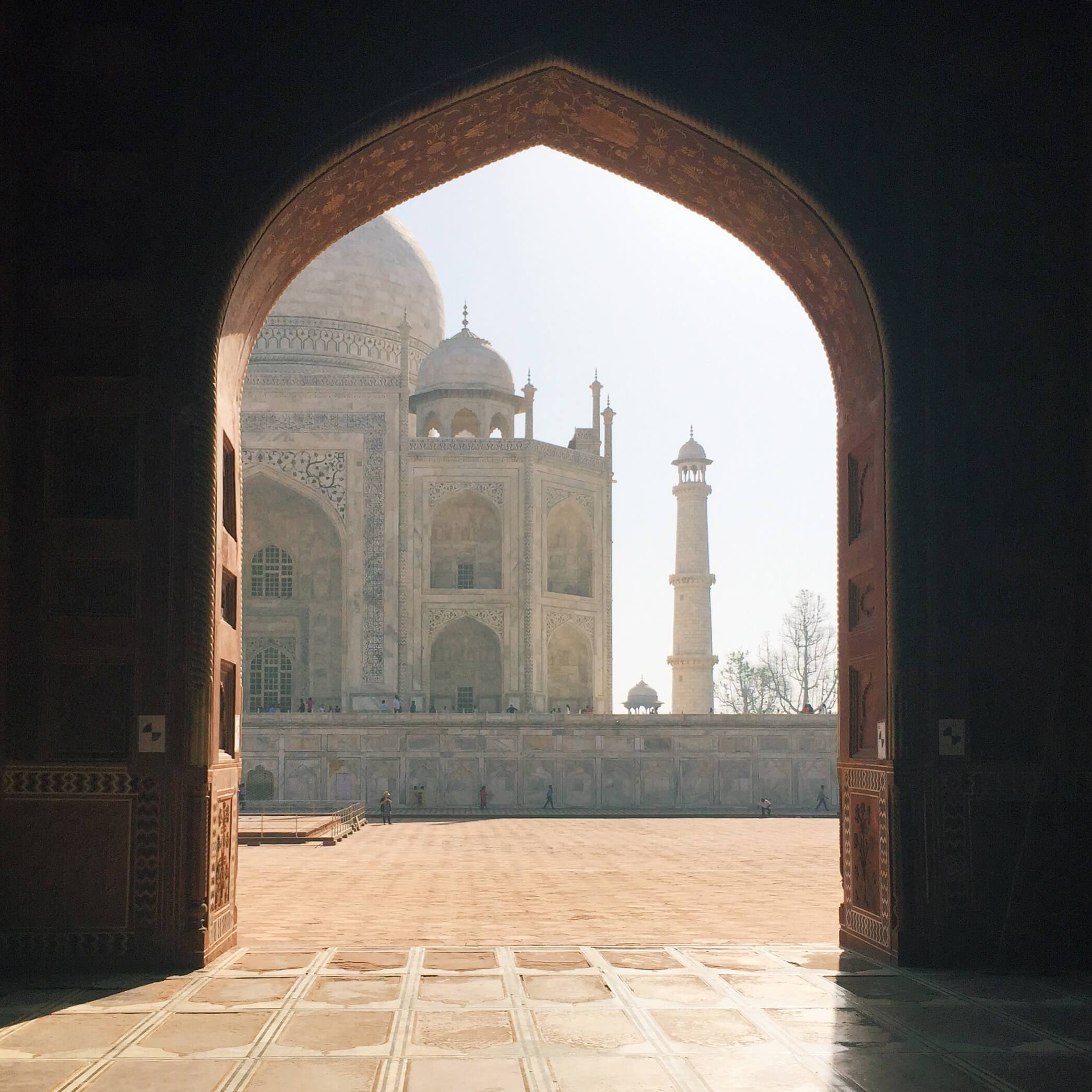
It really is the most beautiful building my eyes have ever seen. I took this photo in the mosque that stands to the west of the Taj Majal. Twenty thousand workers were recruited from across India, Perisa, Balucistan to build the Taj, whilst the calligraphers were recruited from Syria. The entire monument is made from translucent, hand cut marble.
When leaving the grounds of the Taj Mahal on my last day in India, I remembered all the reactions I garnered when I told everyone where I was headed. I laughed to myself at how little people know of a world outside their Arab or cultural bubble. If that bubble makes you happy then there is not much that I can say or do to change that worldview; but remember that our ancestors travelled the world seeking, acquiring and spreading knowledge.
And yes, even those Arabs went to India.
By Sarah Chaabo
Public servant by day and public observer by night, Sarah is a photographer and well known Sydney Instagrammer. You can find her photos and commentary on her Instagram account, @sarah_and_the_city.










